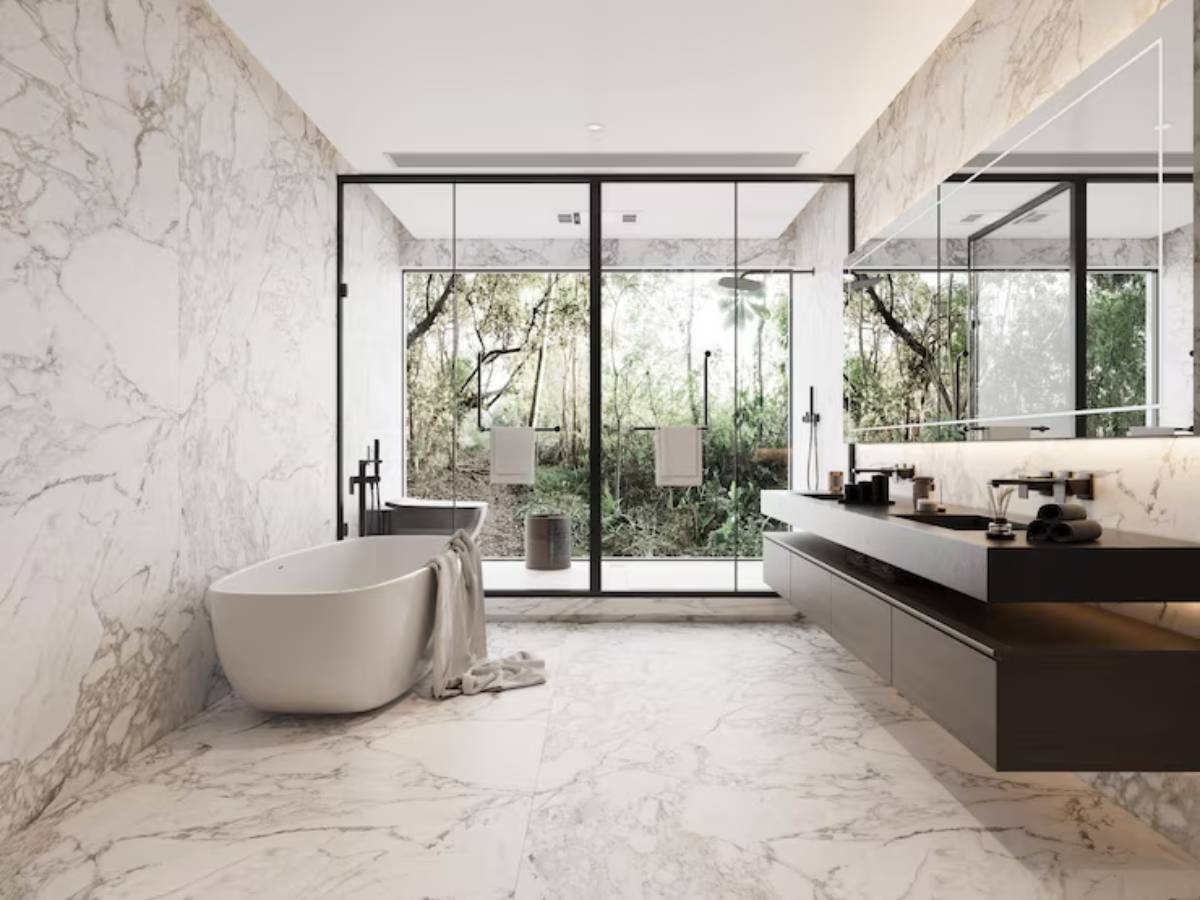The Personal Development Blog

Creating Screen-Free Zones at Home
You walk into the living room and instinctively reach for your phone. Not to check anything urgent, just… out of habit. Maybe you open a social app, skim a few updates, or turn on the TV for background noise. It’s not bad, per se, but by the end of the evening, you wonder where your time went — and why you still feel overstimulated.
If that sounds familiar, you’re not alone.
Screens are everywhere — in our pockets, on our wrists, at our bedsides. And while they offer convenience and entertainment, they also quietly chip away at our presence, calm, and connection.
That’s why more people are choosing to carve out screen-free zones at home. These are intentional, tech-free areas designed to reduce digital overload and create space for real rest and meaningful interaction.
In this article, you’ll discover the benefits of a digital-free living space, practical ideas for setting one up, and how it can help reduce tech stress in a way that’s empowering, not restrictive.
Why Screen-Free Zones Matter More Than Ever
We’re not just talking about too much screen time — we’re talking about the constant presence of screens in every aspect of life.
What does that look like?
- Checking emails in bed
- Watching Netflix while eating dinner
- Scrolling through social media during conversations
- Using your phone as a “break” every few minutes
It’s all so normalised that it’s easy to miss the impact.
But here’s what researchers are finding:
- Digital overload can lead to higher levels of anxiety, fatigue, and poor sleep
- Excess screen time affects your ability to concentrate and be present
- Tech-heavy homes often experience more conflict, especially around shared spaces like the bedroom, kitchen, or living room
According to the American Psychological Association, nearly half of adults say they feel “disconnected from family or friends” due to screen distractions at home.
Creating screen-free zones is not about ditching tech. It’s about designing moments where your brain — and relationships — get a chance to breathe.
What Is a Screen-Free Zone?
A screen-free zone is a physical area in your home where digital devices are either limited or not allowed.
This could be:
- A single chair or a corner where you read
- The dining table where no phones are allowed
- Your bedroom, where screens are swapped for books or rest
- A kids’ play area with no digital distractions
- Even a dedicated weekend nook for hobbies, journaling, or conversations
The key is that these spaces are intentional. They remind you to pause, disconnect, and return to the present.
And when done right, these spaces don’t feel restrictive — they feel restorative.
The Benefits of a Tech-Free Home Setup
Before we get into the how-to, let’s talk about what you stand to gain.
1. Reduced Mental Load
When you’re constantly surrounded by screens, your brain is always on. Notifications, bright lights, noise — all of it taxes your nervous system.
A screen-free zone gives your mind permission to rest. Even 15–20 minutes in a calm, tech-free space can reduce cortisol levels and help you reset.
2. Better Sleep Quality

Removing screens from your bedroom is one of the easiest ways to improve sleep. Blue light suppresses melatonin, the hormone that helps you fall asleep. But it’s not just about the light — it’s the mental stimulation that makes it harder to unwind.
A no-screen bedroom leads to deeper, more restorative sleep — and a better morning mood.
3. Stronger Relationships
Screen-free shared spaces encourage eye contact, conversation, and real connection. You start listening more, talking more, and just being together, without competing for attention.
This is especially powerful for families, roommates, or couples.
4. Increased Focus and Creativity
When you remove the option to check a device, your mind fills the gap with other things — ideas, movement, curiosity, reflection. It may feel awkward at first, but often leads to new thoughts or creative breakthroughs.
If you’re working to set time limits without guilt, creating device-free spaces can make those limits easier to maintain and less tempting to break.
Real-Life Story: Anya’s Dinner Table Rule
Anya, a mum of two, was frustrated that mealtimes had become silent scroll sessions. “We were all there, but not really together.”
She introduced a simple rule: no phones at the dining table. At first, there was resistance — especially from her teenagers. But within a week, conversation picked up. They shared more about their days, played word games, even laughed more.
“It’s just 30 minutes,” she said, “but it’s become the most connected part of our day.”
Choosing the Right Screen-Free Zones for Your Home
You don’t need to go full minimalist. Start with just one space that would benefit from less digital interference.
Popular options include:
1. The Bedroom
- Swap your phone for an alarm clock
- Add soft lighting, books, or a diffuser
- Keep the chargers in another room
This one change can transform your evening routine.
2. The Dining Table
- Make meals sacred again — no scrolling, just eating and chatting
- Use this time for connection or even quiet reflection
3. A Reading Corner or Meditation Spot
- Dedicate a chair or corner for screen-free activities
- Keep a journal, book, or creative tool there instead
4. Kids’ Play Area
- Keep tablets out of the space to encourage imagination
- Add puzzles, building toys, books, or art supplies
5. The Bathroom

Yes, even the bathroom. Studies show that even a few minutes of intentional pause without a screen can help reset your mental state.
How to Gently Transition Into a Digital-Free Living Space
No need to go cold turkey. These tips will help you ease in without stress or guilt.
1. Start with a Trial Period
Commit to making one space screen-free for just a week. Observe how it changes your mood, habits, or conversations.
2. Use Physical Reminders
Add visual cues like:
- A bowl for phones at the table
- A “No Screens Here” sign (especially fun if kids decorate it)
- A book placed in your relaxation chair
These help shift your mindset naturally.
3. Involve Others (But Lead With Empathy)
If you live with family or housemates, explain your intention. Invite them to try it with you — but don’t force it. Let the space speak for itself.
You could say:
“I’m trying something new to feel calmer and present. Want to test it with me for a few days?”
Letting people opt in increases buy-in and respect.
4. Replace, Don’t Just Remove
Instead of only banning screens, bring in alternatives:
- Candles, puzzles, sketchbooks
- Conversation starters or games
- Music, plants, or warm lighting
Create an environment that invites slowing down.
If you’re already exploring taming tabs to stop digital hoarding, this can feel like taking that philosophy one step further into your physical space.
Managing FOMO and Withdrawal
It’s real. The moment you set your phone aside, your brain might panic a little. “What am I missing?” “What if someone needs me?”
Here’s how to cope:
- Remind yourself: most things can wait 20 minutes
- Turn off non-essential notifications
- Set a timer — knowing when you’ll check in reduces anxiety
- Let others know when you’re offline, if needed
Over time, your nervous system adjusts. The stillness becomes comforting, not boring.
Real-Life Example: Jules’ Weekend Reading Nook
Jules, a 26-year-old student, created a screen-free nook in her small flat by repurposing a chair, lamp, and throw blanket. She kept a journal and a few paperbacks there.
“I thought I’d only use it once or twice,” she said, “but now I go there every weekend. It’s like my little pause zone.”
She noticed her Sundays felt less rushed, her mind less tangled. “It’s my slowdown space. I didn’t know how much I needed that.”
Final Thoughts: Your Home, Your Attention
Creating screen-free zones at home isn’t about rejecting technology — it’s about respecting your time, your relationships, and your headspace.
Your home should be a sanctuary, not just another extension of your feeds and notifications. And you don’t need a total overhaul to make that happen. One corner. One table. One phone-free evening a week — it all adds up.
So here’s your gentle challenge: Choose one space this week to make screen-free. Add something that brings comfort, curiosity, or calm. See how it feels.
You might just discover that what you gain from unplugging is far more than what you’re giving up.









